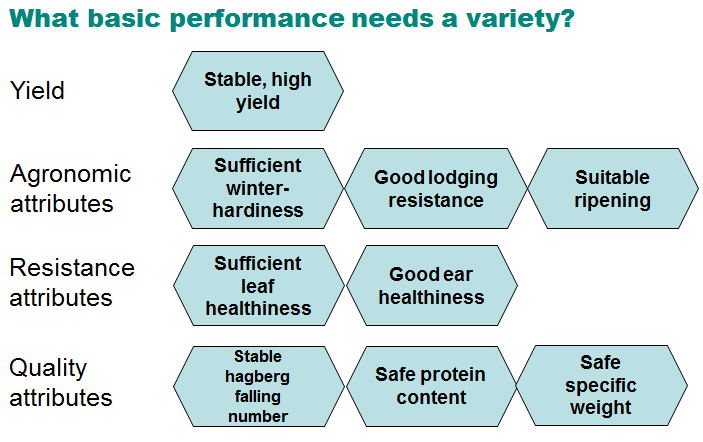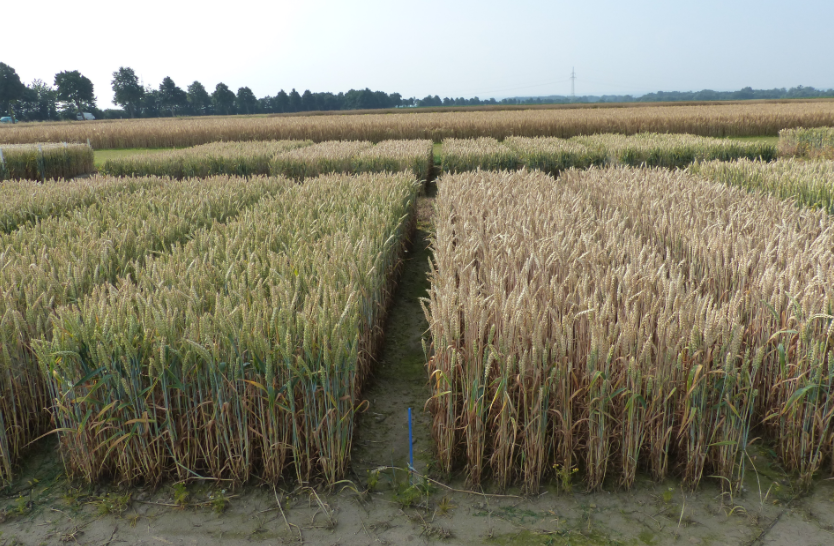In the field, the good lodging resistance of the varieties has a big priority. By intensive selection of the breeders, nearly all modern wheat varieties are equipped with a good lodging resistance today. Varieties with a high risk of lodging are almost not available anymore. That is the reason why lodging fields disappeared almost totally from the countryside and only after heavy rainfalls it can be found sometimes. On locations where a very strong lodging resistance is needed, varieties like ETANA, ASPEKT and ARCHITEKT are very suitable. But also varieties with a normal lodging resistance like PATRAS and ARKTIS can be grown comfortable with an locally adapted quantity of growth regulator.
After some years with mild winters, the very important attribute of frost resistance of winter wheat varieties was sometimes forgotten. As a kind of insurance, the frost resistance has a high priority in regions where late frost events without snow coverage can happen. The financial loss for the farmer can be very high due to missing frost resistance.
Harvest timing with different maturity
The maturity of north European varieties is spreading about over one week. Especially in bigger farms, it can be interesting to plant earlier and later varieties on the different fields, to time the harvest and flatten the peaks of parallel ripening fields. Additionally this topic can also lead to a reduction of risk, caused by different weather conditions. In years with late rainfall, this rain can be used better by later varieties. On the other hand, when heat and drought are speeding up ripening already in June, earlier varieties have often a benefit. This kind of earlier varieties are for example ASPEKT and EMBLEM.

